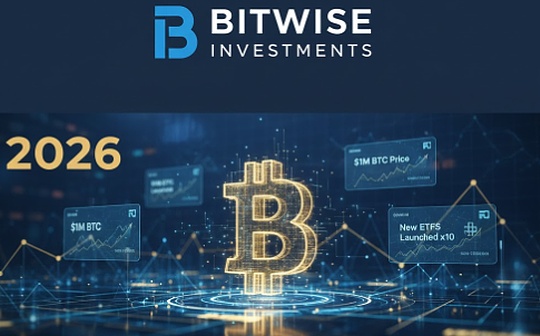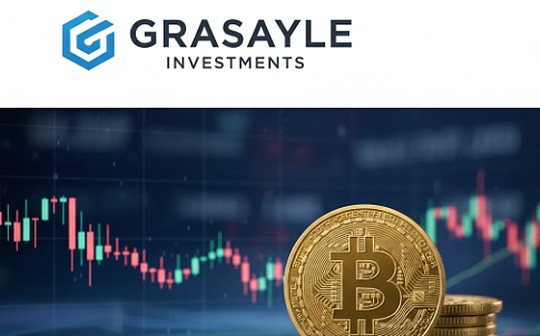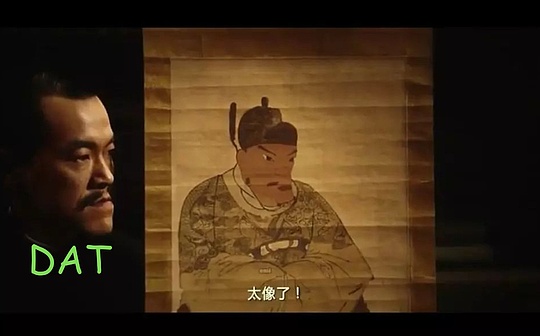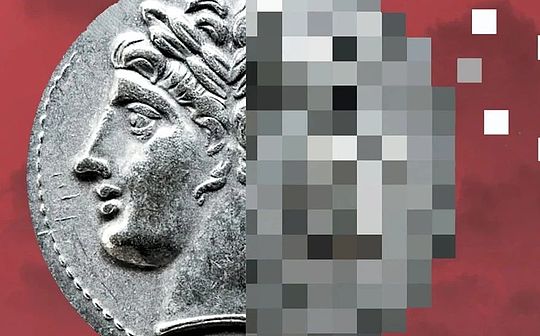
Article author: Rachel O’Dwyer, Alex Estorick, Ana María Caballero
Article translation: Block unicorn
Rachel O’Dwyer’s new book, Tokens: The Future of Money in the Age of the Platform, is now available in hardcover andVersoe-book.
Alex Estorick:In recent years, NFT (non-fungible tokens) have gradually attracted attention together with voting rights tokens.Why do tokens suddenly become so important?Has there been a fundamental change or just the language used changed?
Rachel O’Dwyer:Tokens have always been the shadow of the real economy.Before blockchain, Bitcoin or any currency experiment after 2008, we have tokens that work in all forms.By “tokens” I mean there are more or less mediums of exchange than state-backed currencies.They are “less” than currencies because while currencies are at least theoretically replaceable—one euro is the same as other currencies—the tokens come with additional conditions; they are usually only used by some people or exchanged for certain commodities.or in certain places or when certain conditions are met.
Take the beer tokens used by student unlicensed bars, which have multiple historical examples.For married women who can’t use their own money, there are some special tokens.These women live through store accounts, postal bills or invisible dollars.Likewise, there are relief vouchers, food stamps and relief payments for the poor, as cash was (and still) considered a dangerous form of relief for the vulnerable.

In the past, there were special tokens designed to exploit workers, not only through wage relations, but also during redemptions—employers paid workers wages with tokens called “notes” that could only be found in companiesThe store is redeemed at a certain price and is set by the employer.If this sounds mysterious, today Amazon pays Amazon gift points to Mechanical Turk workers outside the United States and recently in India, which are related to the worker’s identity and are non-transferable.
Tokens are also “more important” than money.They name exchange value, but are also used for boasting, showing off, spoofing, controlling, communicating, investigating, and more.Greece and Rome had many examples of tokens similar to currencies in ancient times, but also combined exchange and transaction functions with judicial, administrative and public functions: such as tokens for accounting purposes; tokens as shares and ownership; to record debts.and credit tokens; tokens granted to secret societies; transparency tokens; voting rights tokens; game tokens; and tokens as reputation and bragging rights.
What I find so amazing is not how different our token economy is, but how much similarities are there between ancient or so-called “primitive” currencies and today’s tokens.

Now the tokens are returning and increasing exponentially.There are many reasons for this.One is that, as Jaromil said, 2008 broke the common taboo about money.People start to question what money is, what it does, and what it can be.They began to imagine other alternative mediums of exchange.Second, as the platform begins issuing things like currency and doing things like bank in the backend, the tokens stand out.M-PesaIt is a good example of a mobile phone company (Safaricom) issuing phone points as a currency of practical significance in inflation-torn Zimbabwe.Some of these tokens emerged out of necessity – without payment but with a fairly strong telephone network, local users use the Internet stuff as actual payment, currency or remittance.
Many of these innovations extend from the “south” of the earth to the north.If M-Pesa is an example, another example isQ Coin, it was issued by gaming company Tencent, to buy online tokens, and it quickly became an actual online token until the Chinese government intervened and pushed it underground.
Both of these points are important: distrust of the country and the emergence of platforms that do similar banking business have spawned the token economy.Since the pandemic, we have also seen the rise of financial nihilism, prompting people to adopt and develop tokens at a time when all cultures become online cultures.

Ana María Caballero:What history does the system of printing and minting currencies tell?What social impacts will the creation of a new value system have?Are these effects actually inclusive?
Rachel O’Dwyer:It’s hard to answer this question because these histories are very complex.For example, a strange literary school appeared in the 18th century, which Mary Puwei called “social circulation literature.”Thomas Bridges’s The Adventures of a Bank Note (1759-75) and Charles Johnstone’s Chrysal, or translated as The Adventures of Guinea》 (1760-65) are all narrated through money.A coin or banknote tells the story of everyone it meets on its journey and the conversation it overheard during its delivery.Chrysal of Guinea describes its journey in the colonial trade network, from North America to Britain to the Netherlands and Germany.As Krisal said, money is considered to have the power to “go into the heart of the direct owner and interpret all the secrets in their lives.”The token witnesses everything around it.
I really like a work of art by artist Cildo Meireles called“Insert the Ideological Loop: Banknote Project》(Insertion into Ideological Circuits: Banknote Project, 1970).He printed secret messages on the banknotes—anti-imperialist tirades like “The Yankees Go Home” and then re-entered them into circulation.
Here, cash is like a kind of original social media—thing that everyone uses but no one can fully control.
People can sometimes write messages on this kind of media, such as the Canadians who brought Prime Minister Wilfrid Laurier after Dr. Spock (Leonard Nemoy) died in 2015ofChange the image toLooks like the former.But sometimes, this information is political, like in 2019Harriet Tubman Seal, American citizens printed the female portrait leading the Underground Railroad on a $20 note printed with President Jackson’s avatar covering the former.

In Ireland, I have seen pictures of Euro notes engraved with the words “No Borders: End Direct Supply” – an inhuman system of accommodation where asylum seekers are unlimited while waiting for the application resultsDetained in a prison-like environment for a time period.Don’t you think it’s more important to have this information on money than on a wall?It is something to speak to us as a country and a response to power.Users of the Tubman Seal describe it as an act of civil disobedience.
In the early 1900s, when women sought universal suffrage, some penny coins were painted with the words “vote for women”.I like toWomen’s Suffering Pence Penny (minimum coin)Considered as an NFT.Other Victorian penny coins are the same, while the suffragist coins are unique – engraved with different values and requirements.
In tokens, I also considered multiple examples where the community tried to create tokens with “other values” attached: tokens that occupy public resources; tokens maintained; or aimed at pricing negative externalities such as environmental damage, such as environmental damagetokens.I’m so glad I recently spoke to Olúfẹ́mi O. Táíwò in Transmediale, his new bookReconsider compensation(2022) just published.I think he pointed out very gently in our interview that sometimes economists and monetary theorists are a little obsessed with using money as a solution, and the solution actually has to happen on the ledger!But maybe the answer is not to try to solve these problems through the market or the right token, nor should we always try.
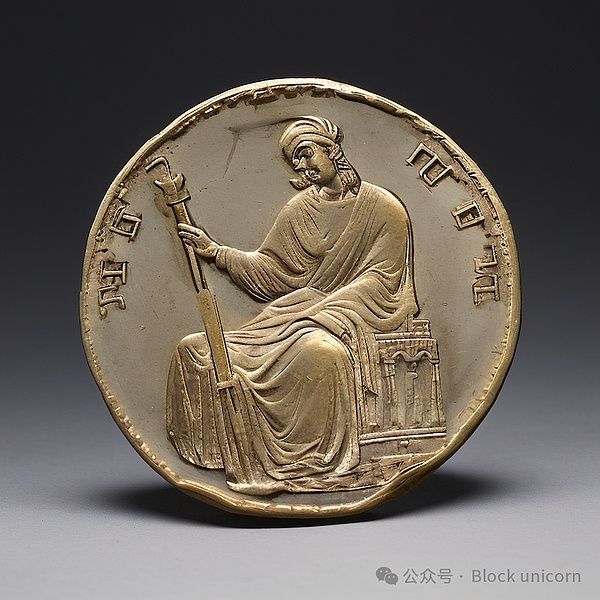
The dark side of a medium that is not easy to replace and/or programmable exchange is that the platform or state script converts value into tokens.
We are in the United StatesSNAP benefitsThis is seen in the – a relief token that can only be used to buy what the state believes is suitable for the poor, including specific kinds of food, but not alcohol or deli food, deli food or sanitary goods.This is not only the value of money, but also the embodiment of value.Faced with the future of CBDC (Central Bank Digital Currency) and platform-issued currencies, tokens with value and conditions are obviously worrying, but whether there is room for operation; we determine what value we hope to encode into the medium of exchange?Or we’d better just leave it alone?
Tokens also focus on trying to create new forms of currency history, etching alternative values into our medium.I’ve discussed itTime BankandDemurance feeand their use in early anarchist communities in Europe and the United States.Most are amazing (and sometimes even hilarious) failures.Creating a new economy or society involves more than simply creating different tokens.Often, when economists deal with this issue, they see it as an economic issue—a price issue.When an engineer or a computer scientist approaches it, they see it as a construction or engineering problem.Many times, the problem of monetary reform is solved through the perspective of technological determinism—if you simply build the right blockchain or protocol, the right society will magically follow.But to reshape society, relying solely on killer applications is not enough.

Alex Estorick:What does money mean in the NFT era?NFT seems to break the difference between art and currency?Is the function of art in society changing quietly?
Rachel O’Dwyer:Mckenzie Wark’s paper“My Collectible Ass”There is a good breakdown in this question, which is very useful.With the rise of commercial capitalism and the rise of the art market, artworks became a commodity.Artists have also become more individual, and their works are valuable because of their unique status.
Today, artworks are more like derivatives; their value is less reflected in the material or aesthetic value of the work, but more in network effects, hype or information spread around it.
Thinking of value as a bet on information or network effects allows us to transcend art as an asset class (as art has long been an asset class) and think about the increasingly abstract financial instruments associated with such specific assets.Today, what is sold during the transfer of art is no longer a material thing, but a system of rights and behavior.Recently, art has been no longer focusing on physical objects, but more on the information spreading around commodities.In the economy of conceptual art and NFT, what is important is not the material entity of the work itself, but the system of rights circulating around it.
In Tokens, I’ve told youDan FlavinStories of the certificate being damaged in a fire.Flavin is a concept artist known for his sculptures arranged with ready-made fluorescent light bulbs.Collectors still own the material combination, but the contract has been destroyed.Although they still have material works, they no longer own Flavin—because all the value is in the contract.This sums up the moment we are in now.It tells us a lot about why NFTs are valuable.It’s really frustrating.
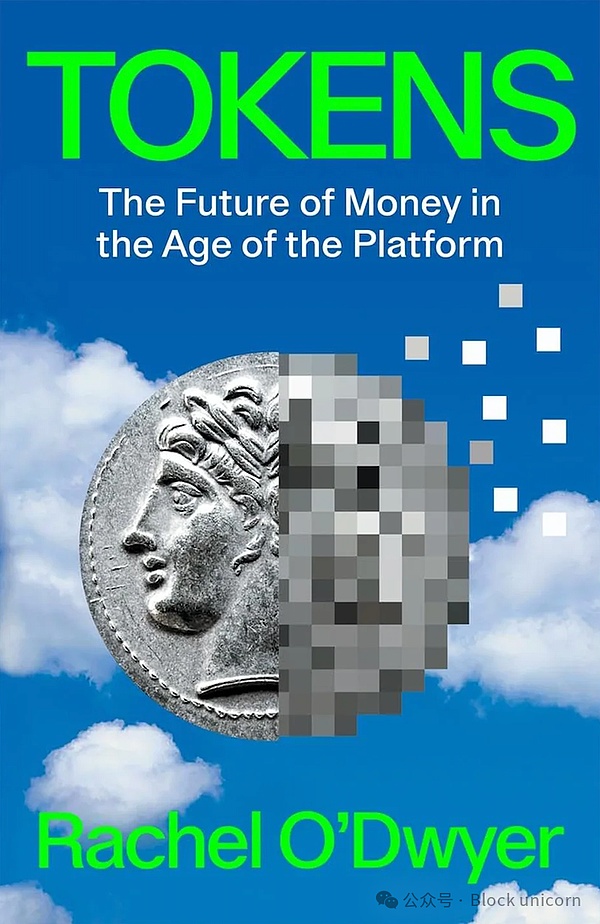
Ana María Caballero:In your book, you make fun of male-led cryptocurrency conferences that may be building a new token economy.If a new token economy was primarily established by men, what is the political significance of these novel human-created creatures in the words of Langdon Winner?
Rachel O’Dwyer:I started making money because of my radical tendency.But I was quickly exhausted and disillusioned.I feel guilty about “burnout” which sounds like I did a lot of work to get to this, but I didn’t!I find the politics and atmosphere of the space for cryptocurrency and currency activity exhausting.In my twenties, I lived in a house in Dublin with my current husband, his sister and a bunch of other lovely people.This is very inclusive.There have been many people coming and going.Most of us participate in various social movements outside of our daily work, whether it is local groups focusing on areas such as anti-gentrification and anti-privatisation, or more global projects.
Apart from these things, my expertise is mainly digital sharing and I am involved in different alternative economic projects outside of Ireland.During this busy period of 2015, I received many people, includingRobinhood,P2P Foundationmembers and various money activists.[…] I began to notice potential sexism in tech activism and found it annoying.

TokensThere is an incident in which money is transformed into a human rights activist, although for hilariousness, but it is actually a rather disturbing experience.I was asked to organize a seminar on money and public resources for a university.The job is not paid, I am the only woman invited-I guess it is a “symbolical” woman.Björn, I wouldn’t use his real name because he gave me the impression of being a good litigant, he was very aggressive and attacked me saying that money activism may not be the friendliest for non-white Europeans orThe most inclusive place.He said that perhaps white European men would not feel the need to resort to discrimination to prove their inferiority.The organizers of the meeting were present, but no one took any action to challenge or resolve the situation.
There are many verbal commitments to the idea of reciprocity, but at the end of the day, the same old hierarchy or subjectivity is coded into the project.
I know I have committed the same sin.I grew up in a very neoliberal mentality, and I also have that mentality.I’m a bad guy and don’t want to tell others how to reshape the economy, which is whyTokensThere is no part of the reason why there is really any normative advice on how we should treat the future of currency.I know I’m not the right person to make this suggestion.But maybe someone else can provide the right advice on this basis?
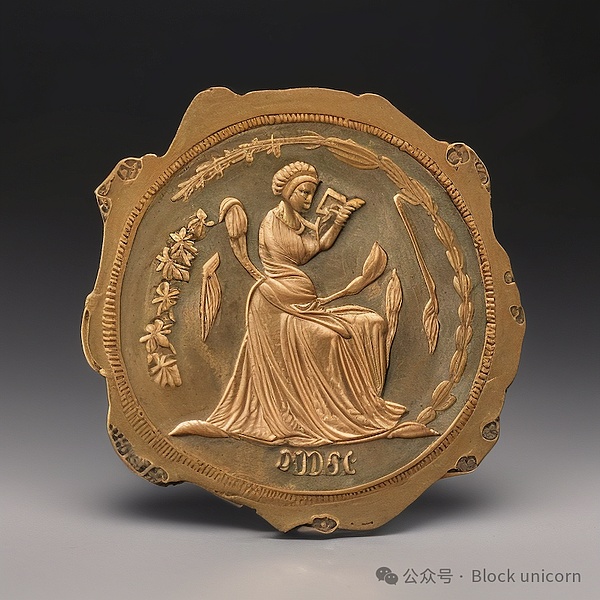
Alex Estorick:In Web3,Co-createandOpen source codeIt is highly valued, but people often expect mutual benefit.Therefore, it often feels like a mixture of sharing economy and gift economy.What did you infer from such community behavior?
Rachel O’Dwyer:I think there is a risk that when we use any type of token to measure reciprocity, we end up measuring contribution too closely.For example, in an interview about their experience, a LETS (local exchange trading system) community in West Cork observed that it was in line with more informal exchanges (such as “This is my turn” in a bar)Compared to the fact that the ledger system used in transactions measures individual contributions a bit too strict (“What did you do for me lately?”).
Once we introduce an accounting system or token—even a system or token based on a non-market ideology of gifts or so-called shared and shared commodities—there is a question: whether we risk introducing market thinking into non-marketOr in social exchanges.Do we risk paying too close attention to give and claim?
There are no strict boundaries between market and non-market exchanges, between gift economy, monetary economy or sharing economy.All economic relations include social relations, and all socialities include a certain degree of calculation.
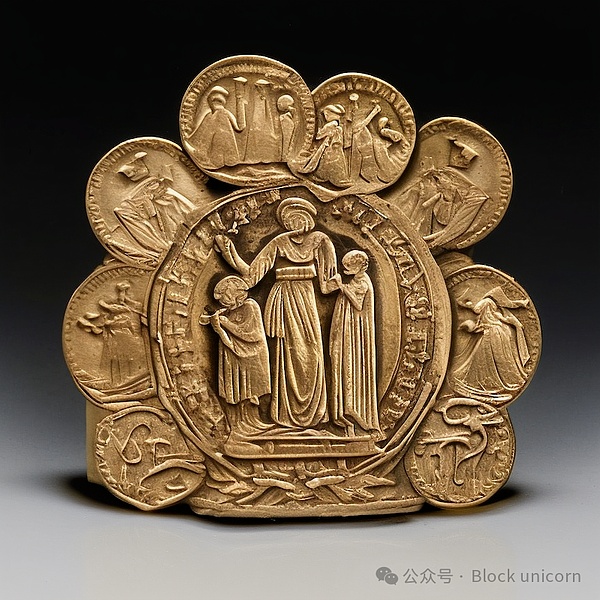
Ana María Caballero:How is NFT different from other types of tokens in history?What can we learn from pre-capitalism and non-Western token economy?
Rachel O’Dwyer:Tokens are more than just value; they communicate more than just exchange terms.They will also make jokes, make connections and spoofs.Reminiscent of NFT’s strange “bragging rights” is that the royal token of medieval France, called jetons royaux, is valued more related to its image than to its naming exchange value or gold weight.They carry an internal language—wrapped with symbols at different levels of meaning—which most people who encounter them cannot interpret.If you can do that, it means you are involved in the joke to some extent.
In the 1990s, anthropologistsViviana ZelizerExplore how the general currency of the 19th and 20th centuries transformed from “specified use” to dedicated tokens.Before this, most of the view of monetary sociology, from Marx to Zimmel, believed that currency simplifies every exchange into a transaction, simplifying every “thing” to its price.Zelizer shows that while money can be calculated, it is still a deep social technology.
By changing the function or appearance of the universal currency, simple payment can be turned into a souvenir, treat, gift or bribe for lovers.
As evidenced by the image search of “Bitcoin”, the token is explicitly encoded as “money.”But their communication ability also exceeds their exchange value.This is especially true when these tokens are circulated through group chats and social media.People useVenmoandWeChat PaymentPayment apps are not only for remittance, but also for jokes with friends, spoof celebrities, and even harassing and blocking their ex-partners.
In online games, markers like skins and expressions (animated reactions) are actually currency, but they can also be used to show off, insult or celebrate.NFTs such as Bored Ape and Friends With Benefits are investment tokens, but they also enshrined membership of elite groups into the code.Unlike commodity currencies (which are worth equivalent to gold or silver), one definition of tokens is that they are a medium of exchange that is worth more than the substances they make.
The value of a token is not in itself, but in the meaning it represents.
The connection between the representative and the so-called “actual value” is not only the biggest issue surrounding the nature of money.It can be said that this is the biggest question about meaning since the beginning of the twentieth century.The connection between representatives and things is the result of the key issues of language, art and value.This problem arises when Western countries abandon the gold standard when artists decide to designate mass-produced items as “art”, and when poststructuralist philosophers challenge the relationship between words and things.But it is clearly working as we try to understand why Elon Musk’s token “value” or Shiba Inu Internet Meme’s token is popular.

Alex Estorick:Can tokens help challenge the financialization of culture, or just promote the financialization of culture?
Rachel O’Dwyer:Tokens are polysensical, so they can easily challenge financialization, or they can easily achieve financialization, although most of the time they are used to enable it.There are multiple projects using tokens to challenge or question the financialization of culture.
Yves KleinYves Klein’s Zone of Immaterial Pictorial Sensibility is one of the most popular works, involving the sale of seven invisible “areas” on the Seine in Paris with pre-specified weight of gold.To purchase the work, the buyer must meet with the artist and transfer the gold in the presence of some kind of expert witness (the museum director, curator or gallery owner) and two other witnesses.Klein then threw half of the gold into the Seine, where it would be irreversible.The buyer will then obtain a certificate of ownership for the intangible area.The problem is the following clause: Klein points out that in order to truly own the work, the buyer must now burn the contract.Only in this way can he be the real master.From then on, the work is no longer transferable.
Accepting tokens means giving up ownership.Having it means giving up all possibilities of future exchanges.What value is there when the right to exchange is lost?When exchange is everything, what remains of art?
Just as tokens can be spaces for placing in, hoarding, and guessing non-material and material values, they can also be spaces for questioning the type of value we want or asking what value is left after all exchanges or hype is over.

Ana María Caballero:Humans have to outsource trust – put it in external objects such as tokens and contracts, what does that mean for you?In Web3, tokens become contracts, which made some people cheer for the emergence of “no permission required”.What are the dangers of believing that tokenization contracts are “licensless”?
Bitcoin White PaperThe famous idea of a “license-free” contract was proposed – no license is because we no longer need to trust each other because we can trust the code.This iscypherpunkandextropianA popular idea in the community – these two 90s mailing lists for Bitcoin andSmart contractsThe development has had an impact.These communities believe that by trusting a concise agreement, you can get rid of the chaos of human bureaucracy, politics, and trust in others.They want to replace government with code, but it’s a very simplified view of politics and what government actually means.
We still need people to get involved, and it’s obvious whenever something goes wrong or controversial about the so-called “licensing-free” community in Web3.The solution does not take the form of smart contracts or code; it takes the form of off-chain objections and disputes.
No permission is needed more of a desire or ideology than something that has existed or practiced historically or at any moment now.But we have to ask, “Why is this idea so tempting?” Why do these communities want to replace others with concise protocols?What in politics—gradual change, others, or confusing arguments—is so unattractive to the enthusiasts of Web3?whenPeter ThielWhy are crypto-punk and extroverts and Peter Thiel not attractive when writing about escaping politics in various forms?
The only projects I really like in Web3 are those that involve people and are highly off-chained.For example,CirclesIt is a blockchain project in theory, but all focus is on promoting social connections within the community, and technology is only part of the pillars that support it.In this case, the technology can be a button or a blockchain, but it is important to people and trust networks.
Rachel O’DwyerHe is a lecturer at the School of Visual Culture, National Academy of Arts and Design, Dublin.She is a Fulbright scholar at the University of California, Irving and the Microsoft Research Laboratory in Cambridge, and is currently a researcher at Connect, the Centre for Networking and Telecommunications at Trinity College Dublin.She is a co-editor of Neuromagazine and writes for media such as Convergence, MIT Press and London Book Review.She curates numerous events, seminars and exhibitions to explore the intersection of digital art, technology and value.
Ana María CaballeroThe first generation of Colombian-American poet, her work explores how biology defines social and cultural rituals, unveils the veil of romanticized motherhood, and questions the idea that sacrifice is regarded as virtue.She is the winner of the Beverly International Award, the National Poetry Award in Colombia, and the Steel-toe Book Poetry Award.Her works have been widely published and exhibited internationally.She is the co-founder of theVERSEverse, a digital poetry gallery.
Alex Estorickis the editor-in-chief of Right Click Save.



